Buttery and flaky, these franzbrötchen are made from a yeasted laminated dough that is rolled with cinnamon sugar and then shaped into fun little pastries.
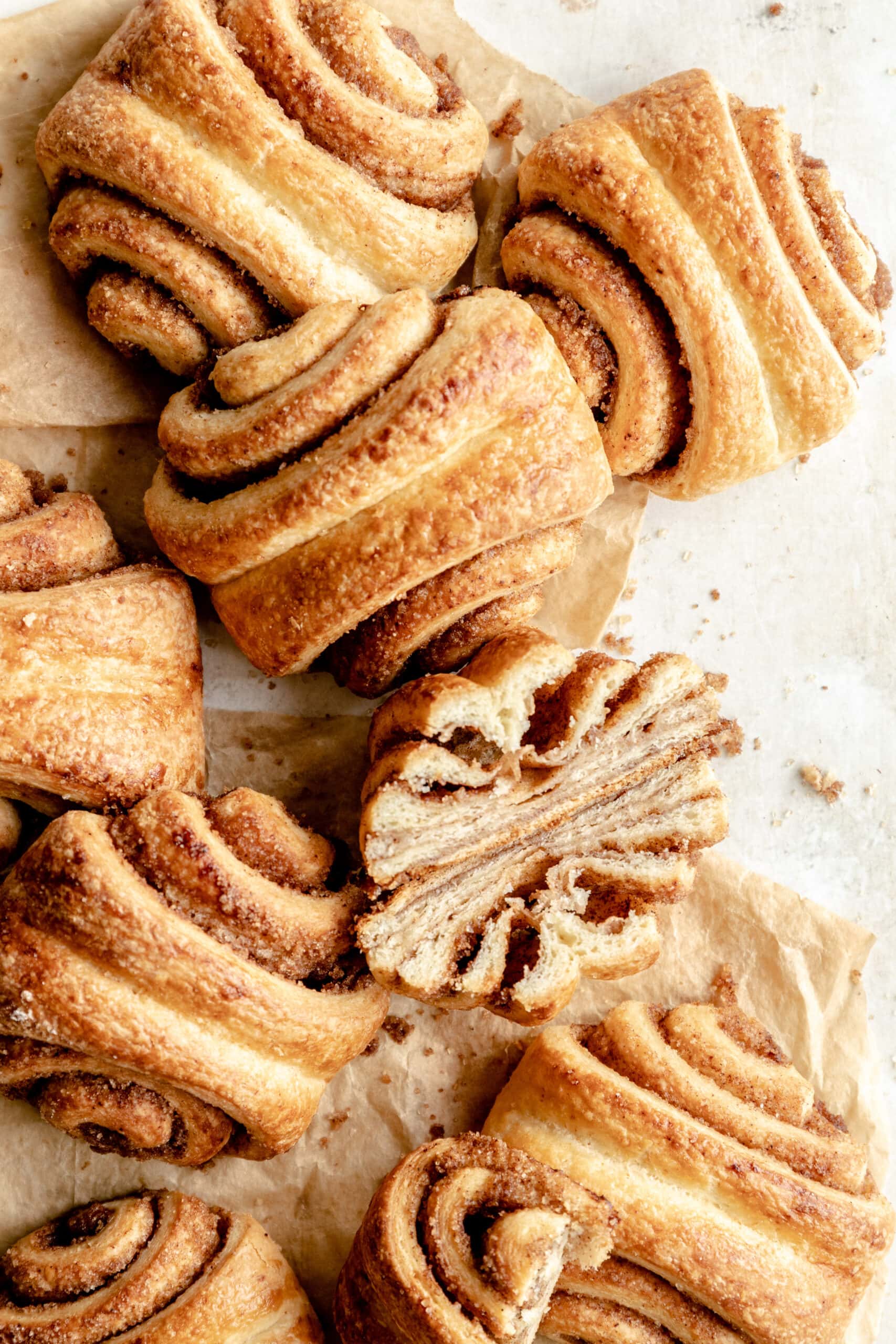
What are Franzbrötchen?
Franzbrötchen are most commonly found in Hamburg. They are a made from a type of puff pastry and most classically filled with cinnamon sugar. However, they can also be found with pumpkin, poppyseed or chocolate filling.
Puff Pastry vs. Yeasted Dough?
In most bakeries, franzbrötchen will be found made from a laminated dough with yeast similar to that of croissant dough. However, home bakers often choose to go with the simpler yeasted dough that results in a more bread like texture. Both are delicious but this recipe uses laminated dough!
What type of butter is best?
Most of the time, a European butter with over 82% fat will work best in laminated doughs because it is more pliable. However, I have made these with regular American butter and had pretty successful results.
You may also like…
Tips for making Franzbrötchen
- Unlike most yeasted doughs, this one should only be kneaded for about 5 minutes, or just until all ingredients have been mixed together. This is because the gluten in the dough will develop during the lamination process.
- Before layering the butter into the dough, make sure that it is cold and firm but not brittle. If the butter is too cold it will break apart into the dough and create little bits of butter rather than nice even layers.
- If the butter is too cold, leave it sitting out for 10-20 minutes until it just becomes pliable.
- When letting the franzbrötchen rise before baking, watch them carefully. This can take between 45 min and just over an hour. They should be slightly smaller than twice the size. If they over proof they will collapse in the oven and the butter will run out.
- If you have any left over the next day, reheat them on a baking sheet in the oven at 350 F. for 5-8 minutes.
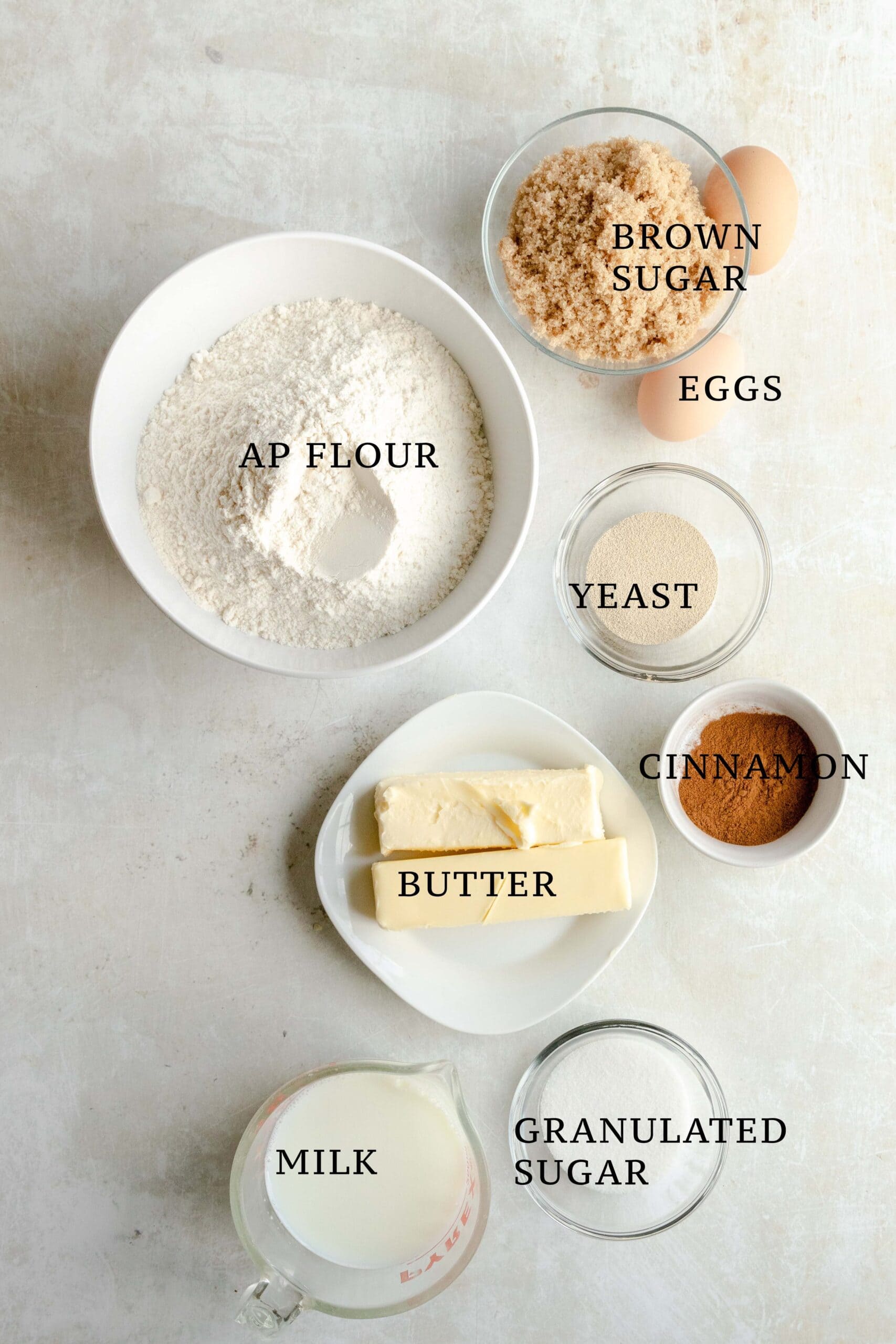
Ingredients
- All Purpose Flour: Any all purpose flour will work for these! I have not yet tried any other flours with this recipe.
- Eggs: I use standard large eggs from the store. This recipe uses one full egg in the dough and one egg yolk in the egg wash.
- Sugar: This recipe uses granulated sugar in the dough and brown sugar in the filling.
- Milk: The franzbrötchen use milk as the liquid in the dough; however, they will also work with non-dairy milks such as almond or light coconut milk.
- Butter: The butter is used in both the dough and the butter block for the lamination!
- Yeast: In this recipe, instant yeast is used. However, if you are using active dry, simply bloom the yeast in the milk alone first and then proceed with the recipe.
- Cinnamon: Cinnamon is mixed with brown sugar for the filling of the franzbrötchen.
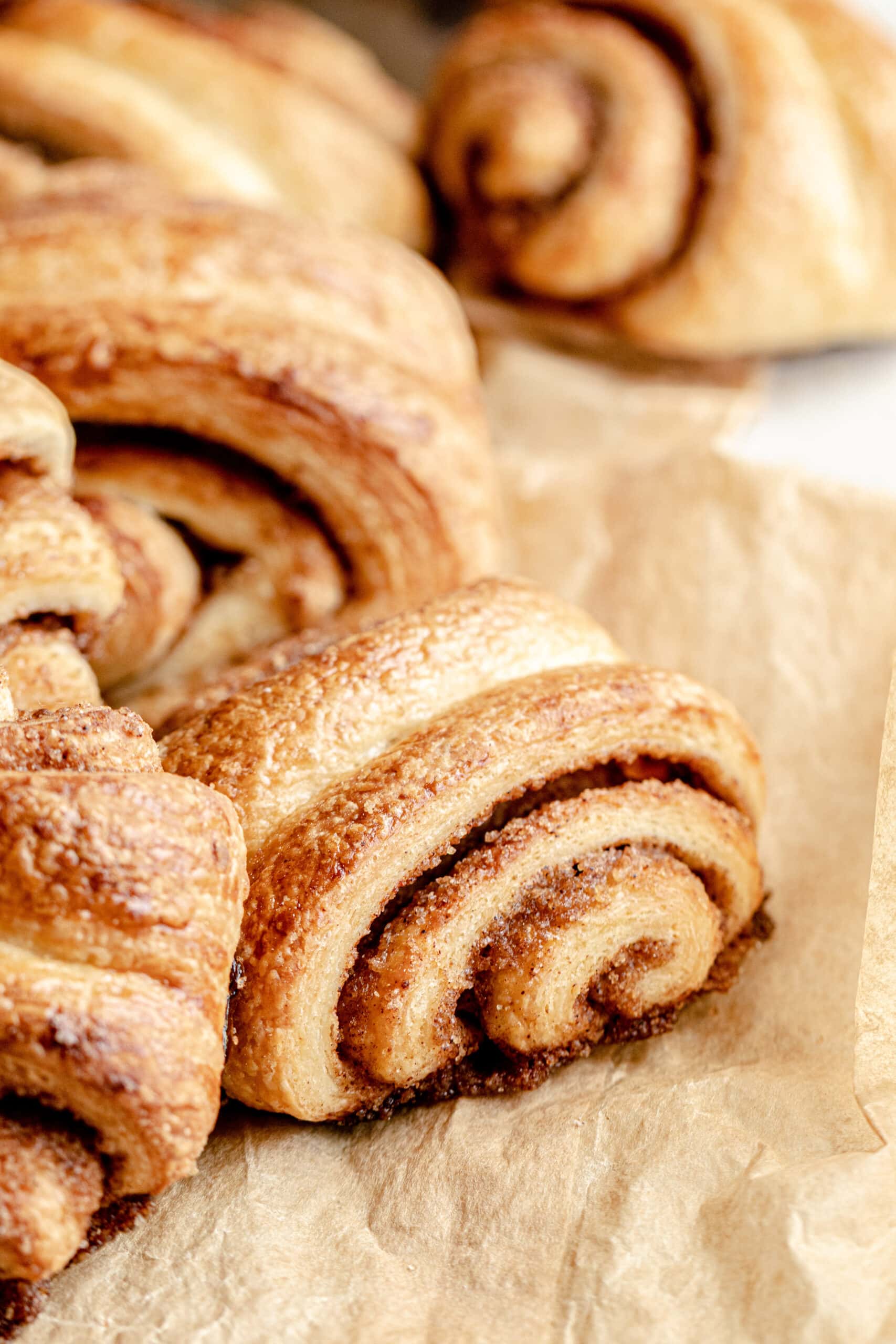
How to make Classic Franzbrötchen
Make the dough
- Start by warming the milk until it is just warm to the touch – it should not exceed 100 degrees F.
- In the bowl of a stand mixer, whisk together the flour, sugar, and yeast. Then add in the remaining ingredients.
- Knead the mixture with the dough hook on the stand mixer for 5 minutes on low to medium speed. The dough should not be smooth but all ingredients should be mixed together.
- Lightly grease a baking sheet and spread the dough on the sheet in a rectangle that is 25 cm x 15 cm. Cover with plastic and place in the fridge.
Butter Block
- Tear off two pieces of parchment that are at least 30 cm in length. On one, draw a square that is 15 cm x 15 cm.
- In the bowl of a stand mixer (no need to wash it after the previous step), add in the room temperature butter and flour.
- Use the paddle attachment and mix on medium speed until the butter and flour are smooth and combined.
- Scoop the butter and flour onto the back side (not the side that you drew on) of the parchment paper with the square. Use a knife or spatula to spread the butter as evenly as possible in the square.
- Place the second piece of parchment on top and press down gently. Flip the stack over so that the square that you drew is visible again.
- Use a bench scraper to push any excess/overflow butter into the the inside of the square.
- Place the butter block on a tray and place in the fridge for 45 minutes.
Laminating
- After the 45 minutes have passed, gently roll the rectangle of dough into a 32 cm x 16 cm rectangle. Place the block of butter in one half, leaving a small border around it on 3 sides. Fold the other half of the dough over the butter and seal the 3 sides of dough so the butter is now sealed in.
- Arrange the dough and butter block in front of you so that there is a seam edge at the top, bottom, and right side – and the left side has the folded edge.
- Press the rolling pin into the dough and butter from the top of the rectangle to the bottom. This will help attach the butter to the dough and make it easier to roll out.
- Then, using flour when needed, roll the dough out into a 30 cm x 40 cm rectangle. Trim the two short ends to clean up and straighten the edges.
- Fold the dough, like a letter, into thirds, keeping the edges as even and straight as possible.
- Wrap the dough in a piece of parchment and place in the fridge for 30-45 minutes.
- After the time has passed roll the dough out again, and repeat the process of trimming the ends and doing a letter fold. Then chill for another 30 to 45 minutes.
- Repeat this process 2 more times.
Assembling
- After the last set of folds, chill the dough for another 45 minutes. 10 minutes before the dough will be ready, stir together brown sugar and cinnamon to create the filling, melt the butter, and line 2 baking sheets with parchment or silicone baking sheets.
- Once chilled, roll the dough out to a rectangle that is 30 cm x 60 cm. Trim the two short ends so they are straight and clean.
- Brush the entire surface with the melted butter. Then sprinkle with the cinnamon sugar mixture.
- Roll the dough up starting at one long edge. With the seam side of the roll down, mark 5 cm cuts onto the roll.
- Then, slice the roll at each mark. Place 5-6 rolls on each baking sheet with the seam sides down.
- Use the handle of a wooden spoon to press down in the center of each roll, parallel to the cut sides of the roll. Be careful not to press through the dough and break it.
- Then, gently press each one down with the palm of your hand.
- Cover the baking sheets plastic or a towel and place in an oven that isn’t on and turn on the light or somewhere warm to rise for 45 minutes to an hour.
Baking
- Preheat the oven (not with the rolls inside) to 400 F. Arrange two racks so that they divide the oven into thirds.
- Make the egg wash by whisking together the egg yolk and 1-2 tablespoons of water.
- Once the franzbrötchen have almost doubled in size, brush them with the egg wash. Then bake for 8 minutes.
- After 8 minutes, swap the baking sheets and rotate them 180 degrees to make sure they all bake evenly. Then bake for another 6 minutes.
- After 6 minutes the franzbrötchen should be a deep golden brown color. They should then be removed from the oven and placed on wire cooling racks to cool for at least 5-10 minutes before serving.

Franzbrötchen | Flaky German Cinnamon Rolls
Equipment
- Stand Mixer
Ingredients
Dough
- 500 grams ap flour
- 50 grams granulated sugar
- 15 grams instant yeast
- 1 egg room temperature
- 60 grams butter room temperature
- 250 ml milk luke warm
Butter Block
- 200 grams butter room temperature
- 50 grams ap flour
Filling
- 40 grams butter melted
- 200 grams brown sugar
- 4 tsp cinnamon ground
Egg Wash
- 1 egg yolk
- 1 tbsp water
Instructions
Dough
- In the bowl of a stand mixer, whisk together the flour, sugar, and yeast.
- Add in the remaining ingredients and knead the mixture with the dough hook on the stand mixer for 5 minutes on low to medium speed.
- The dough should not be smooth but all ingredients should be mixed together.
- Spread the dough on to a lightly greased sheet in a rectangle that is 25 cm x 15 cm. Cover with plastic and place in the fridge.
Butter Block
- Tear off two pieces of parchment that are at least 30 cm in length. On one, draw a square that is 15 cm x 15 cm.
- In the bowl of a stand mixer mix the butter and flour on medium speed, using the paddle attachment, until smooth.
- Spread butter and flour onto the back side of the parchment paper with the square, as evenly as possible within the lines.
- Place the second piece of parchment on top and press down gently. Flip the stack over so that the square that you drew is visible again.
- Use a bench scraper to push any excess/overflow butter into the the inside of the square. Place on a tray and place in the fridge for 45 minutes.
Laminating
- Once chilled, roll the rectangle of dough into a 32 cm x 16 cm rectangle.
- Place the block of butter in one half, leaving a small border around it on 3 sides.
- Fold the other half of the dough over the butter and seal the 3 sides of dough so the butter is now sealed in.
- Arrange the dough and butter block in front of you so that there is a seam edge at the top, bottom, and right side – and the left side has the folded edge.
- Press the rolling pin into the dough and butter from the top of the rectangle to the bottom.
- Use flour when needed and roll the dough out into a 30 cm x 40 cm rectangle.
- Trim the two short ends to clean up and straighten the edges. Fold the dough, like a letter, into thirds, keeping the edges as even and straight as possible.
- Wrap the dough in a piece of parchment and place in the fridge for 30-45 minutes.
- Roll the dough out again, and repeat the process of trimming the ends and doing a letter fold. Then, chill for another 30 to 45 minutes. Repeat this process 2 more times.
Assembling
- After the last set of folds, chill the dough for another 45 minutes.
- Stir together brown sugar and cinnamon to create the filling, melt the butter, and line 2 baking sheets with parchment or silicone baking sheets.
- Roll the dough out to a rectangle that is 30 cm x 60 cm. Trim the two short ends so they are straight and clean.
- Brush the entire surface with the melted butter. Then sprinkle with the cinnamon sugar mixture.
- Roll the dough up starting at one long edge. With the seam side of the roll down, mark 5 cm cuts onto the roll.
- Slice the roll at each mark. Place 5-6 rolls on each baking sheet with the seam sides down.
- Use the handle of a wooden spoon to press down in the center of each roll, parallel to the cut sides of the roll. Be careful not to press through the dough and break it.
- Gently press each one down with the palm of your hand.
- Cover the baking sheets plastic or a towel and place in an oven that isn't on and turn on the light or somewhere warm to rise for 45 minutes to an hour.
Baking
- Preheat the oven to 400 F. Arrange two racks so that they divide the oven into thirds.
- Make the egg wash by whisking together the egg yolk and 1-2 tablespoons of water.
- Once the franzbrötchen have almost doubled in size, brush them with the egg wash, then bake for 8 minutes.
- After 8 minutes, swap the baking sheets and rotate them 180 degrees to make sure they all bake evenly.
- Bake for another 6 minutes, then the franzbrötchen should be a deep golden brown color.
- After they are finished baking, remove them from the oven and place on wire cooling racks to cool for at least 5-10 minutes before serving.
Notes
Nutrition
This page may contain affiliate links. This means that if you click on one of the product links above and complete a purchase, I’ll receive a small commission at no extra cost to you. I will never place a link nor make a recommendation on a product or service that I don’t love or use personally. Read our privacy policy here. Thank you for supporting Red Currant Bakery.
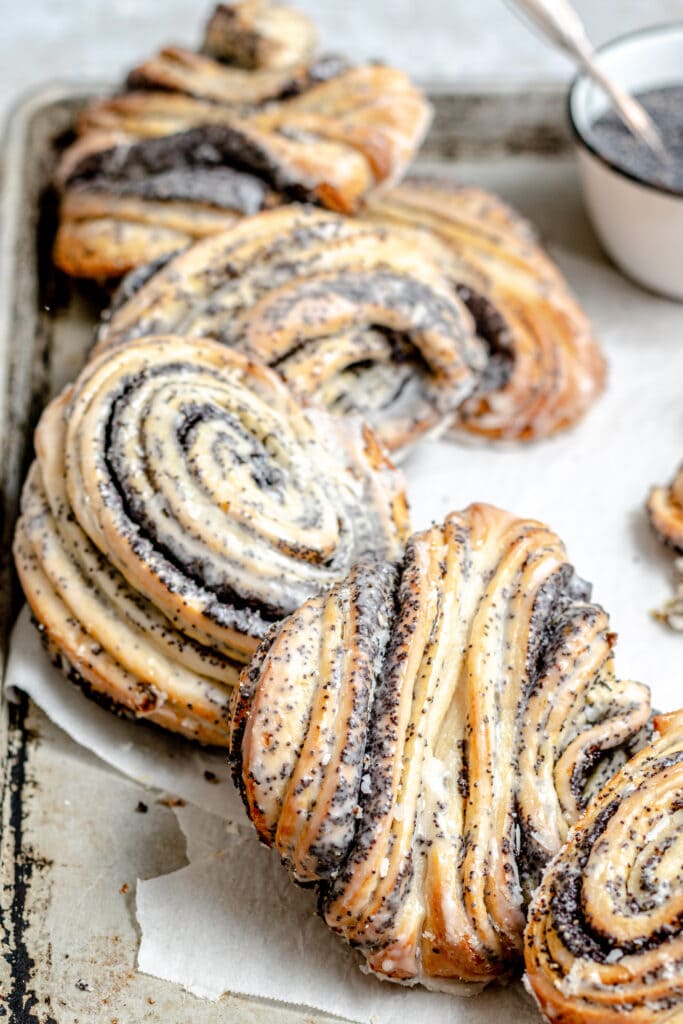
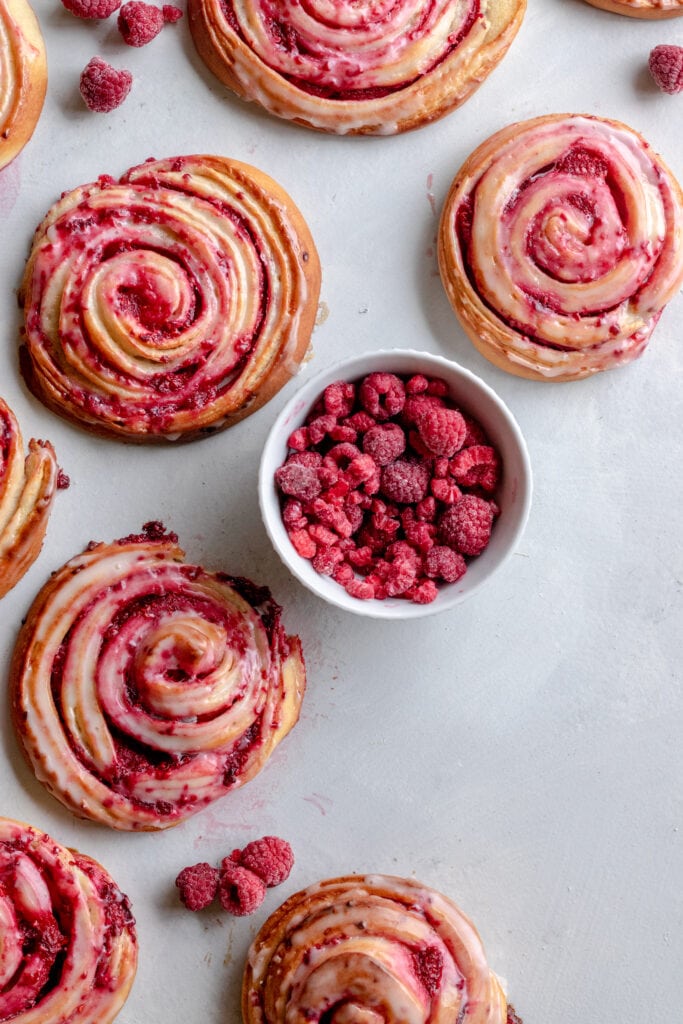
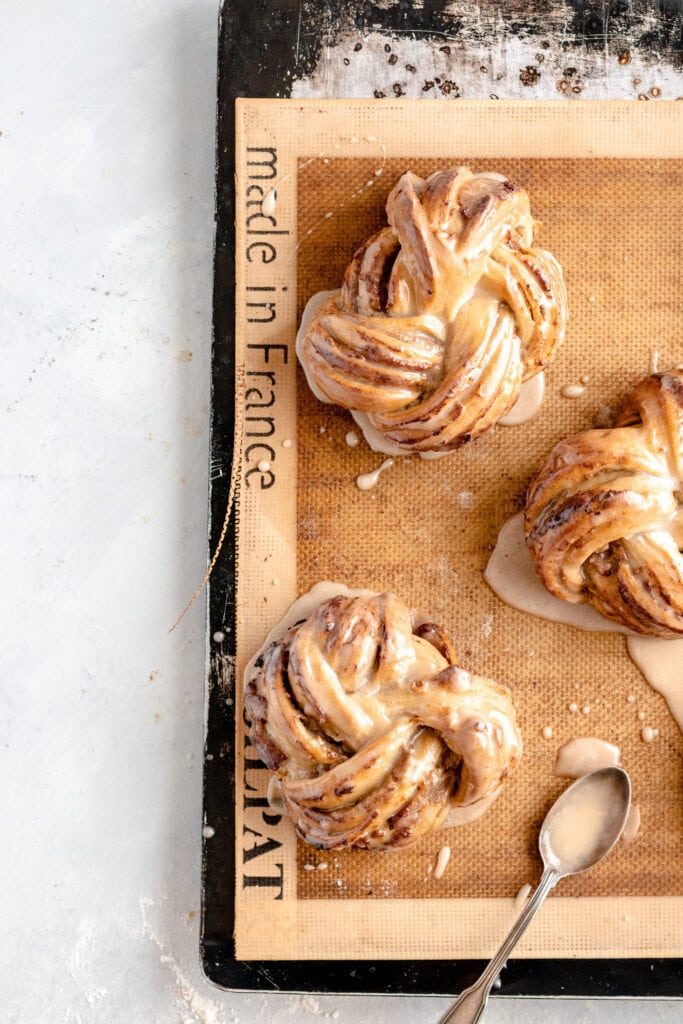
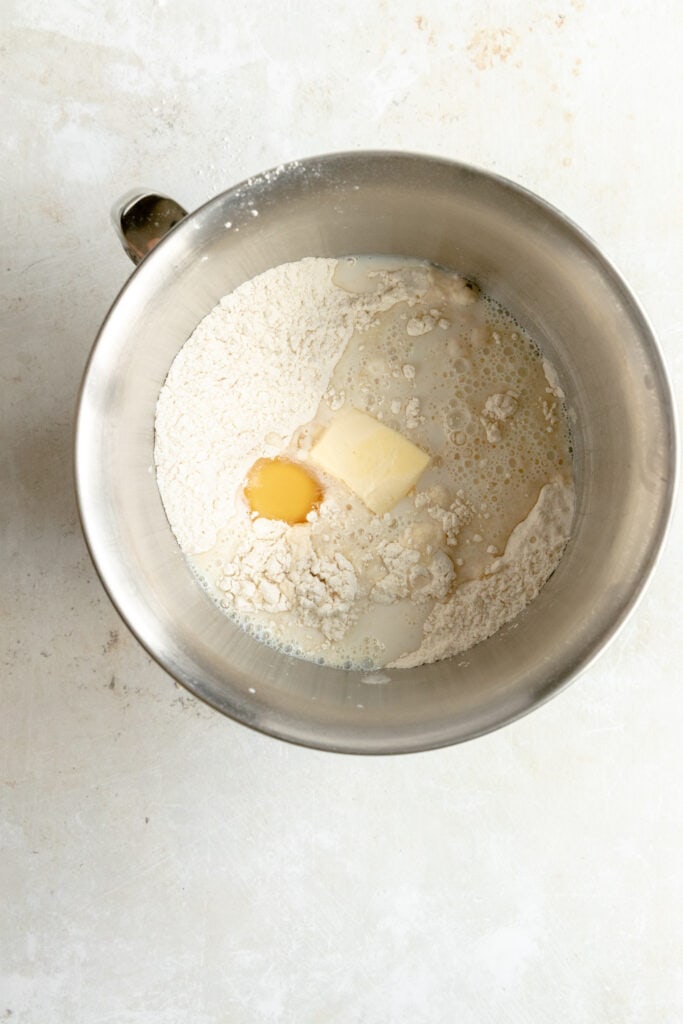
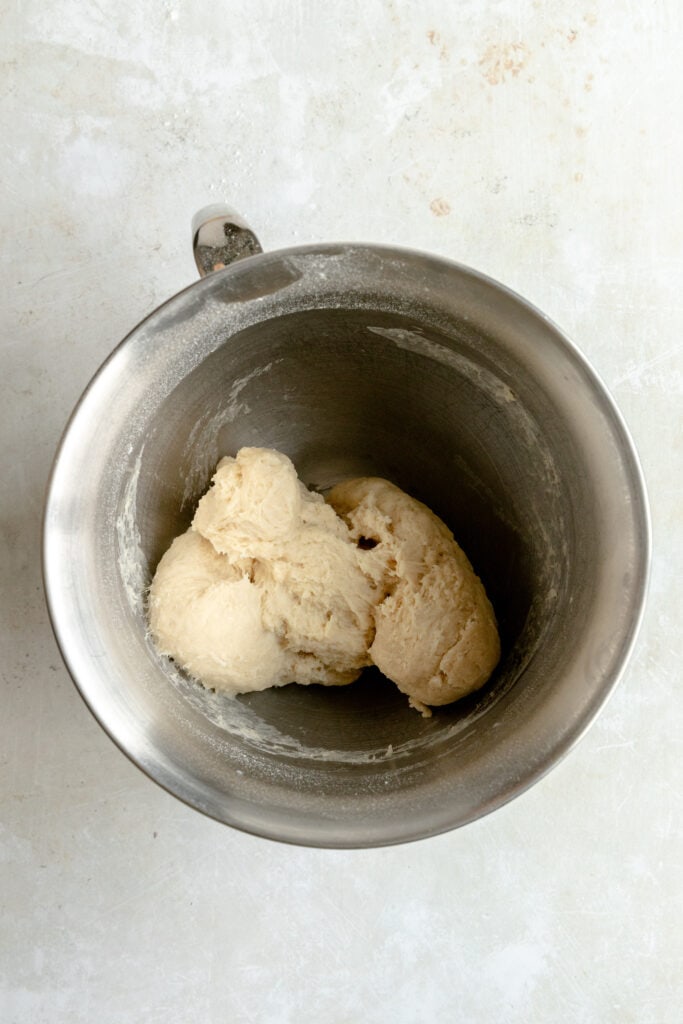
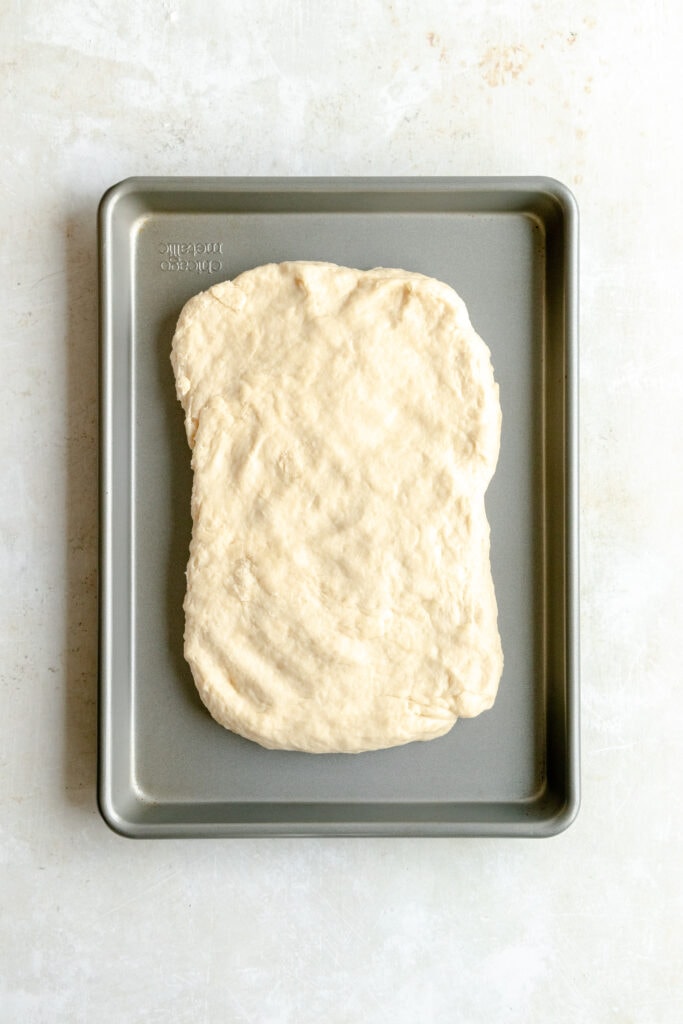
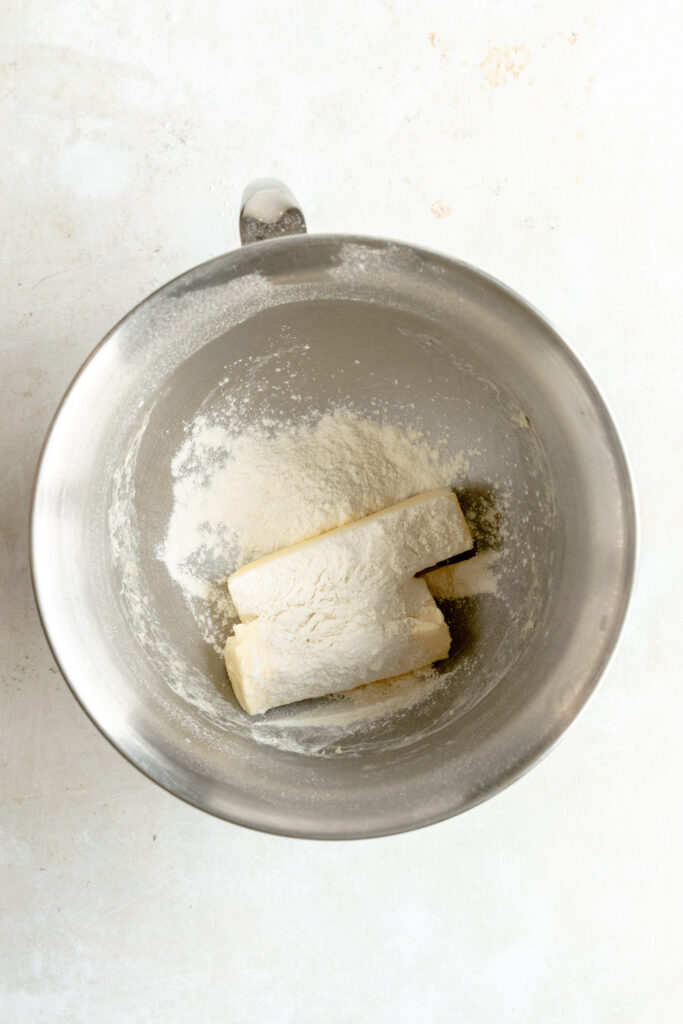
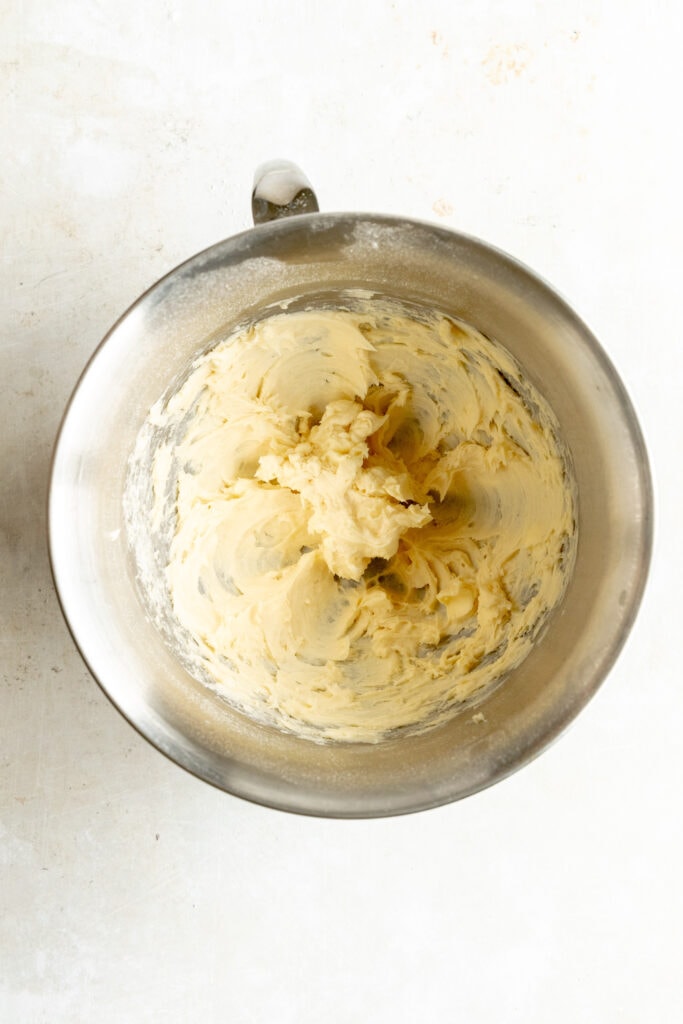
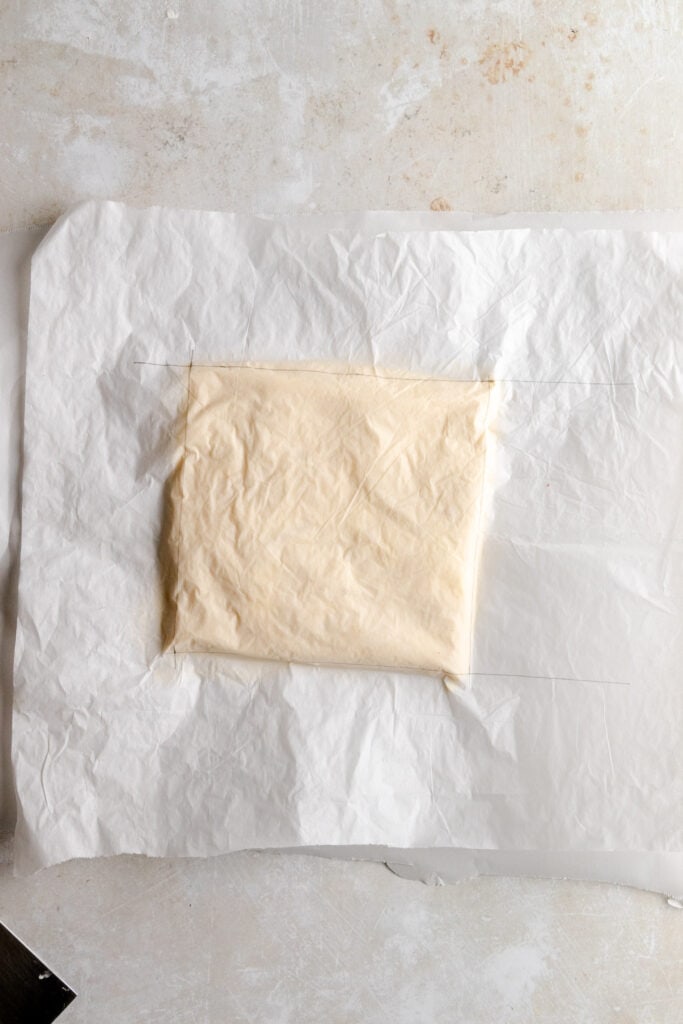
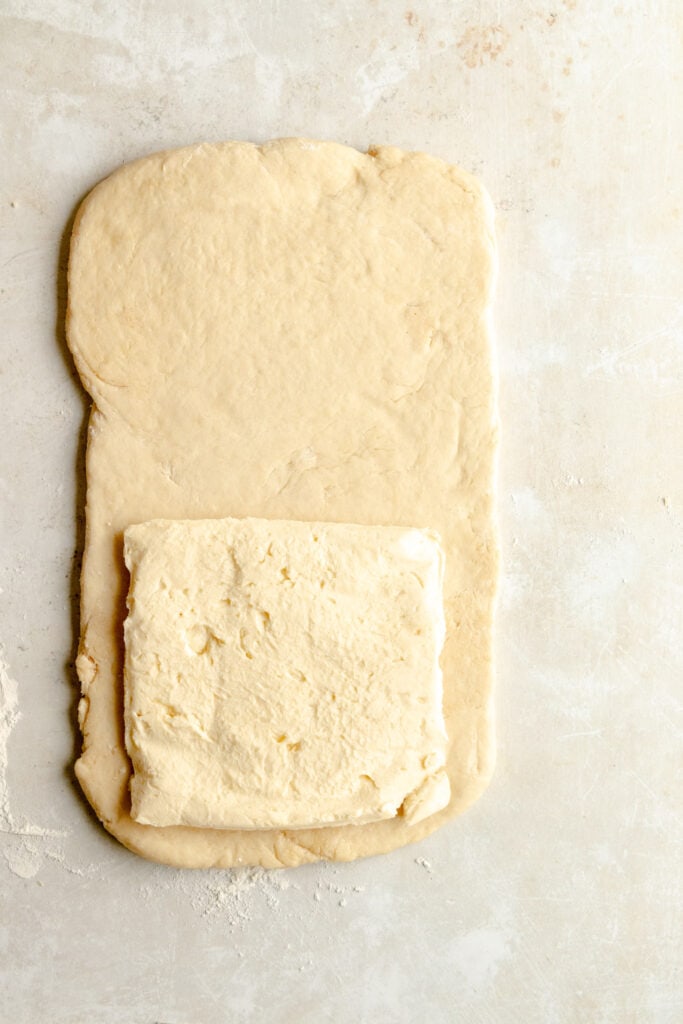
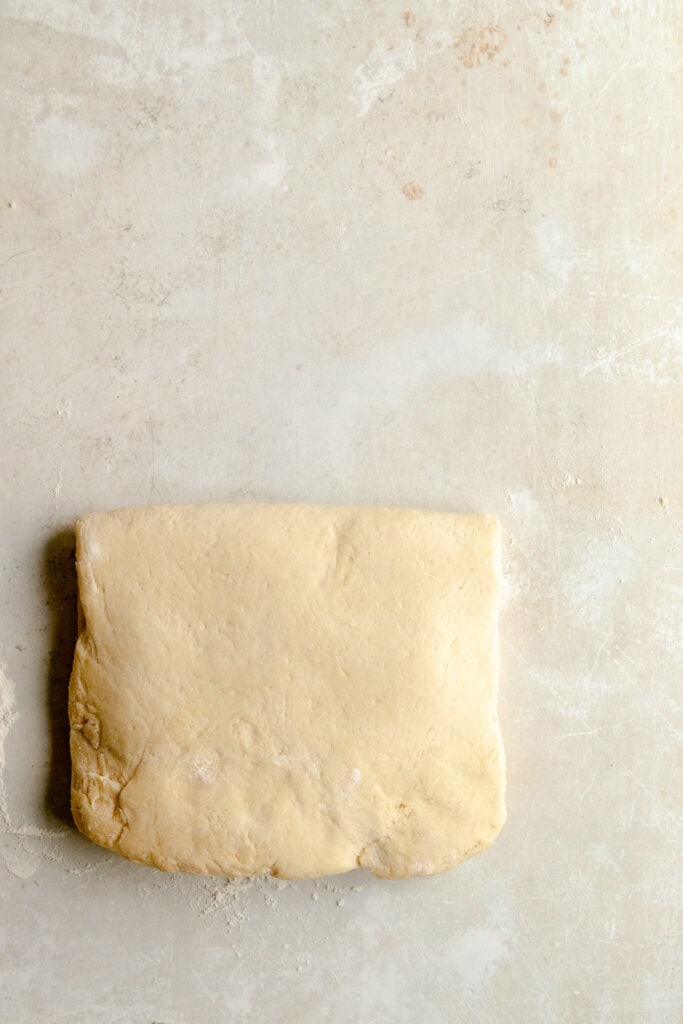
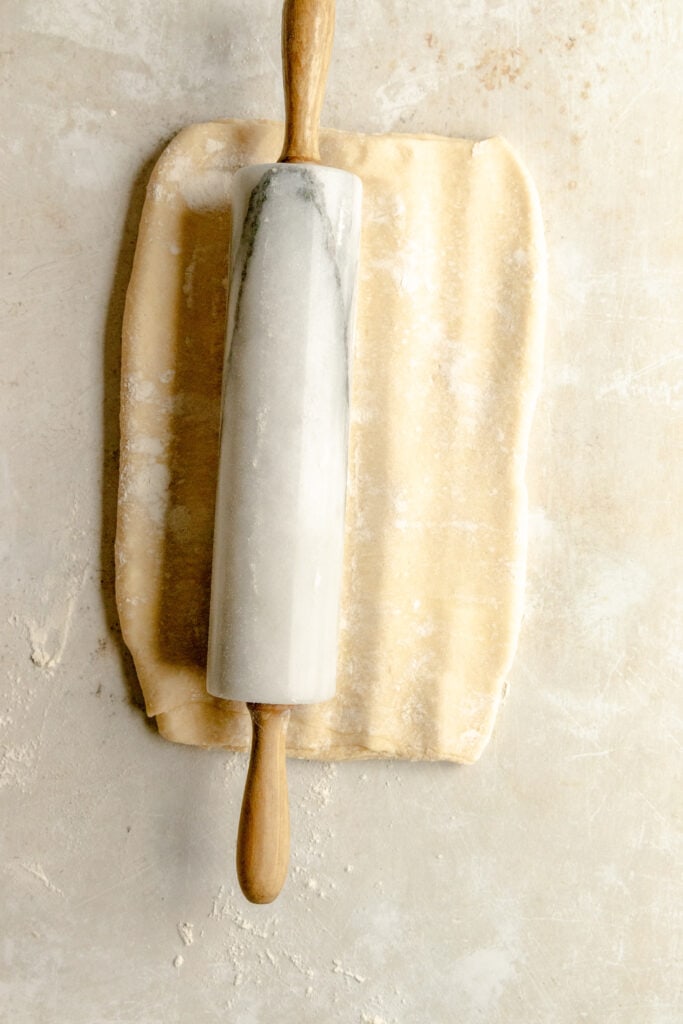
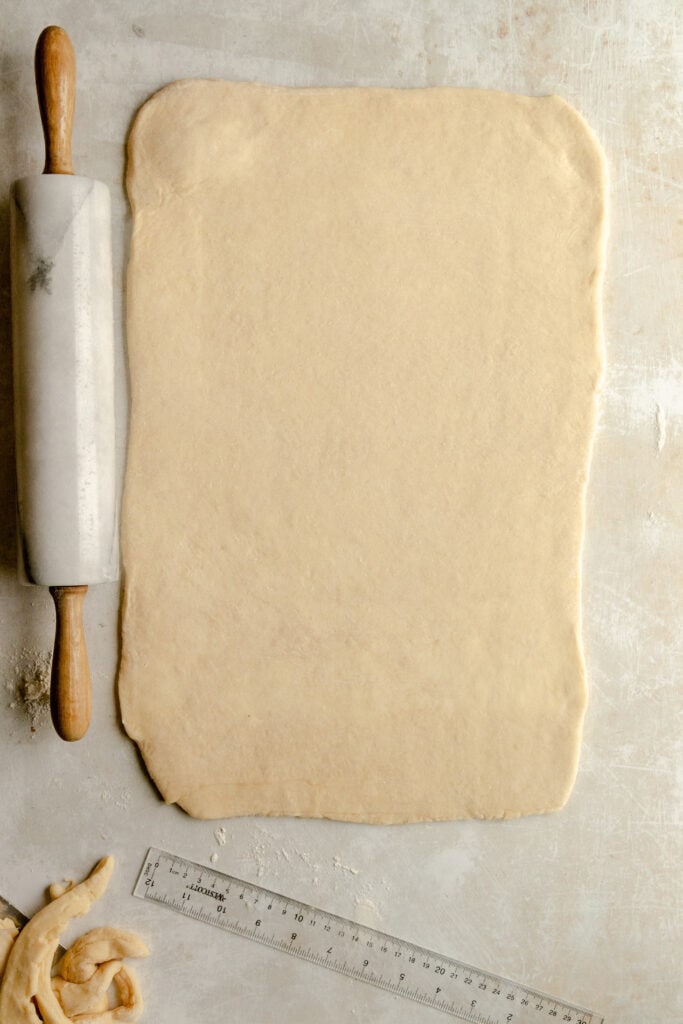
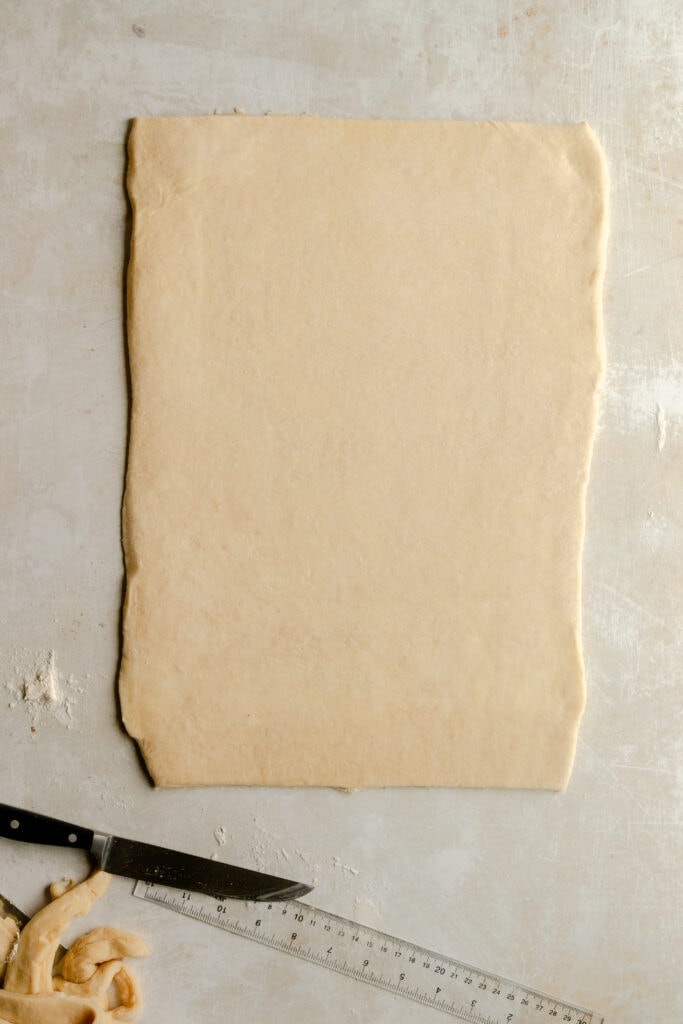
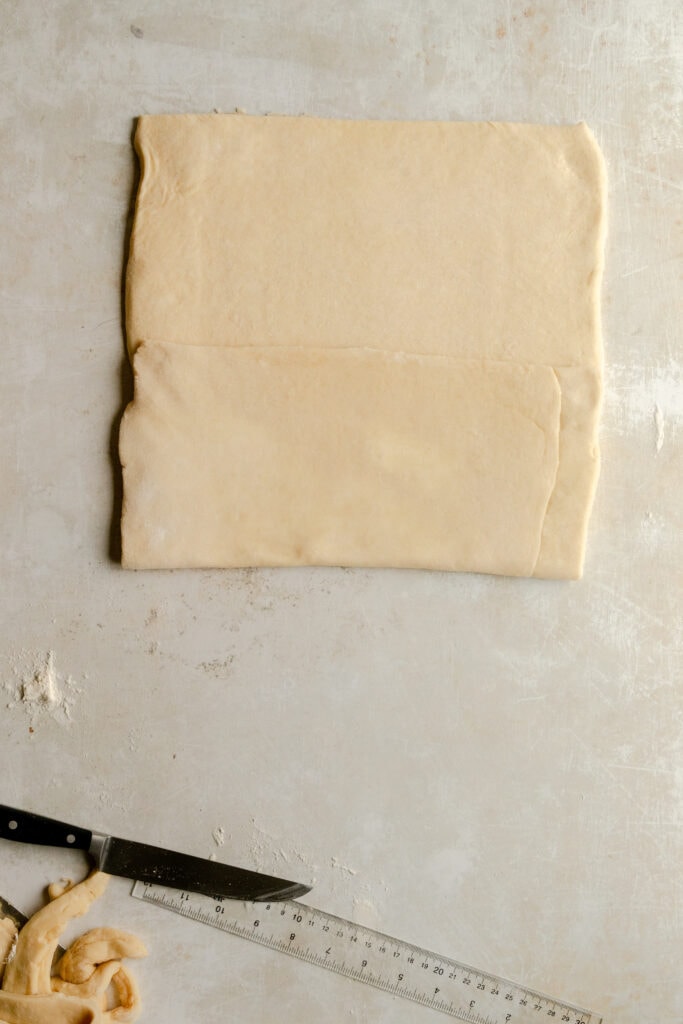
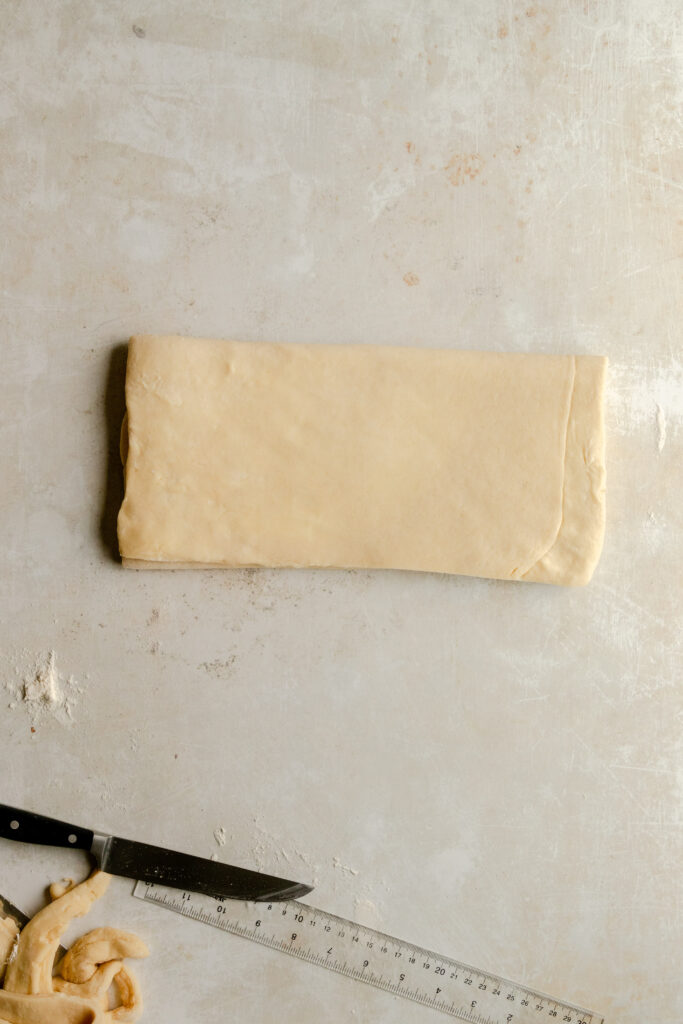
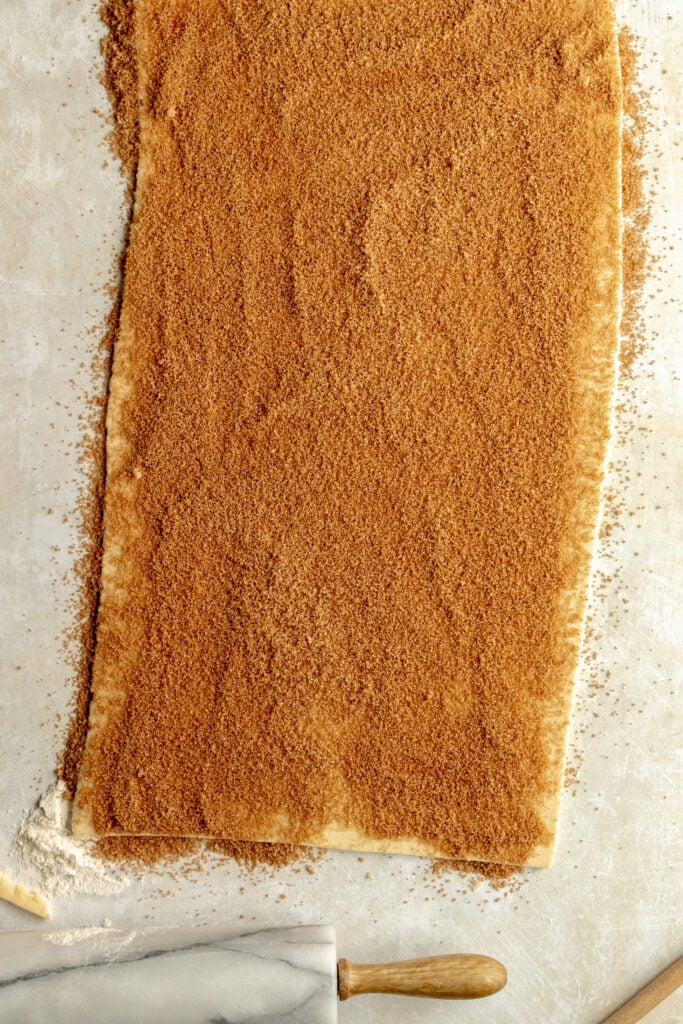
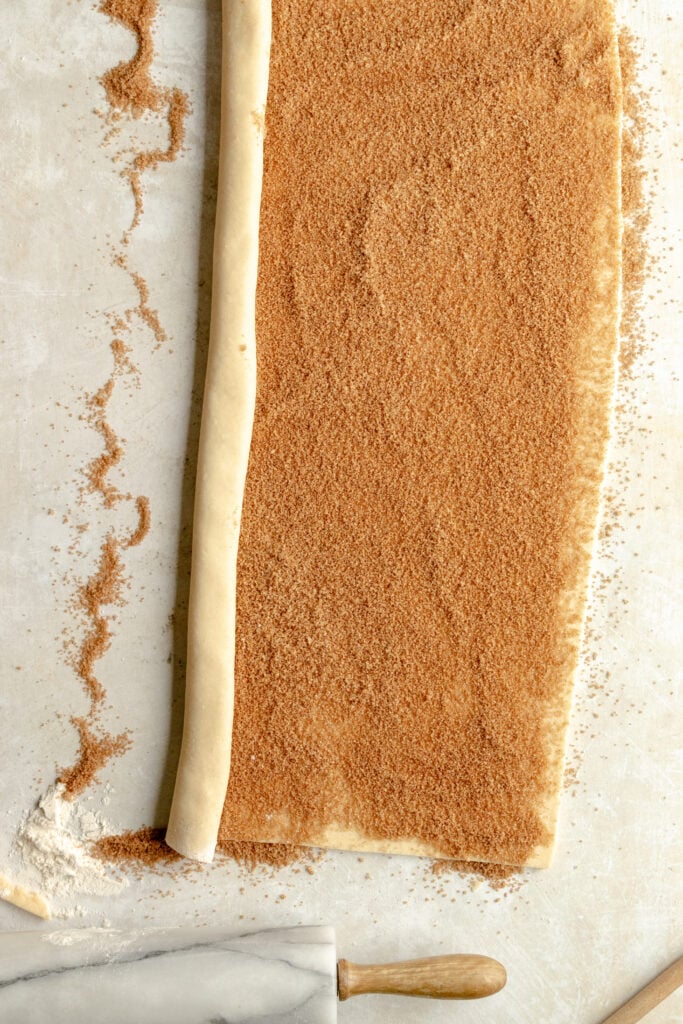

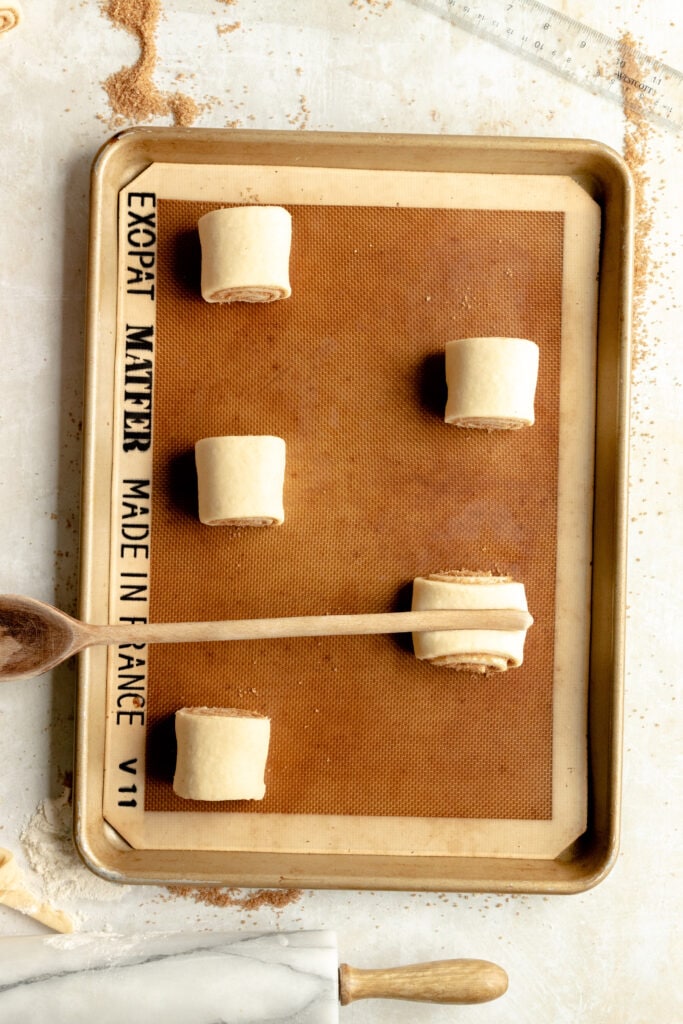

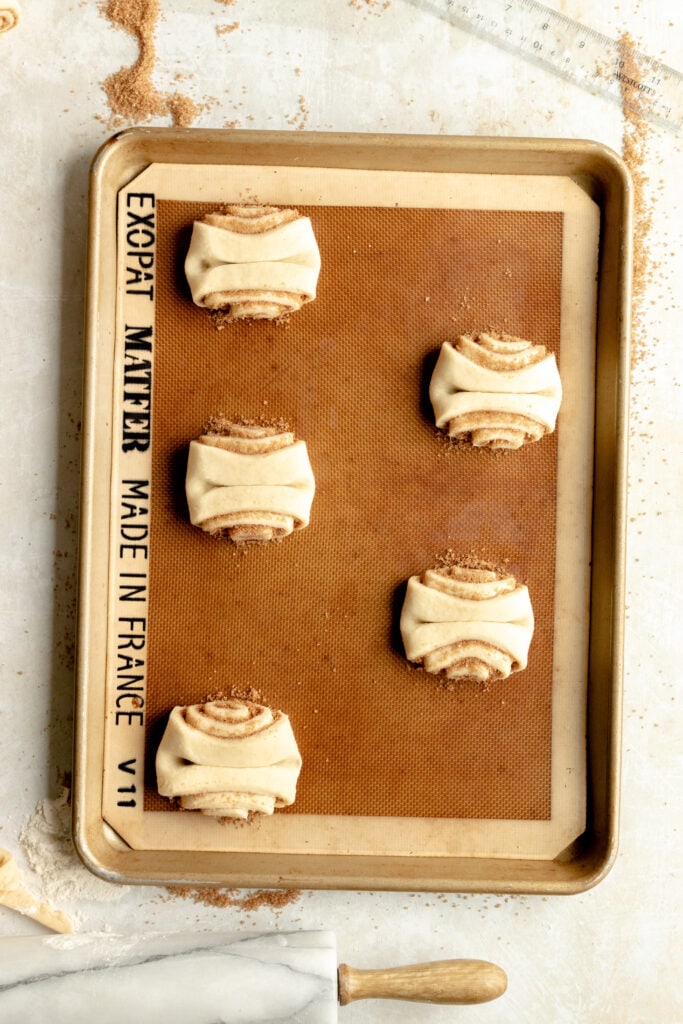
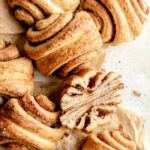
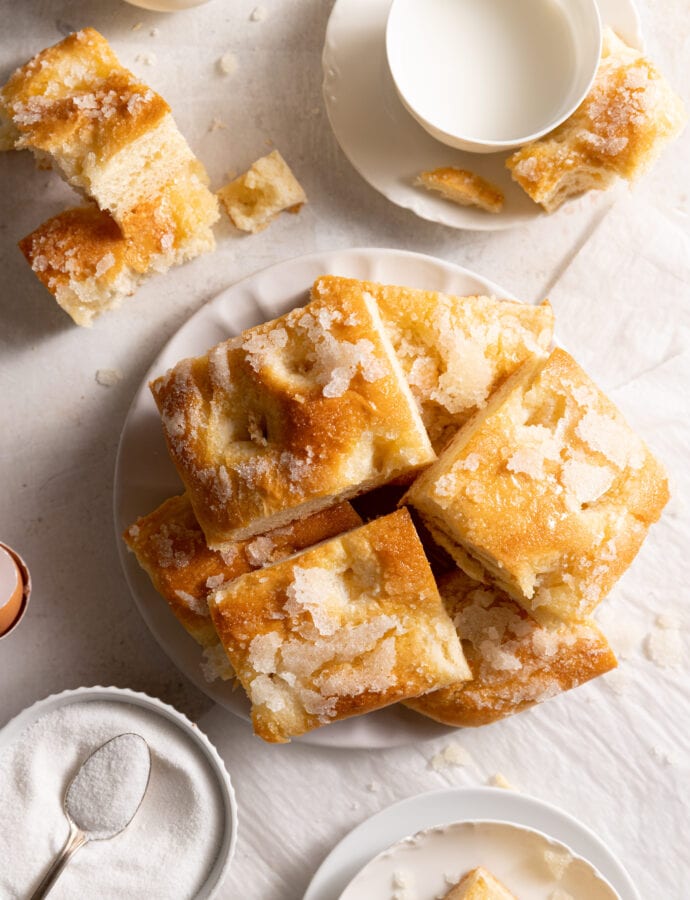
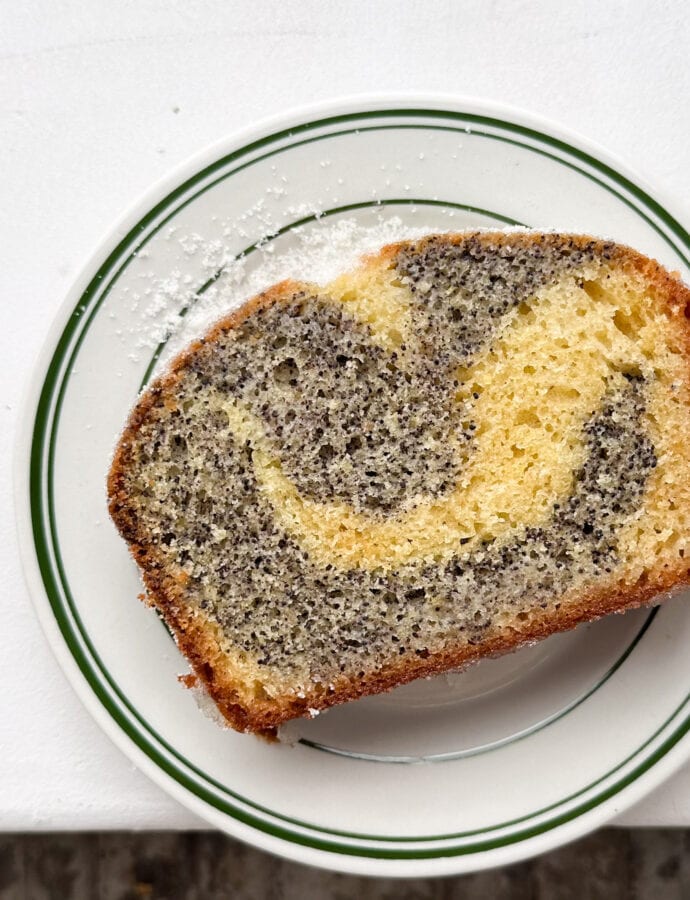
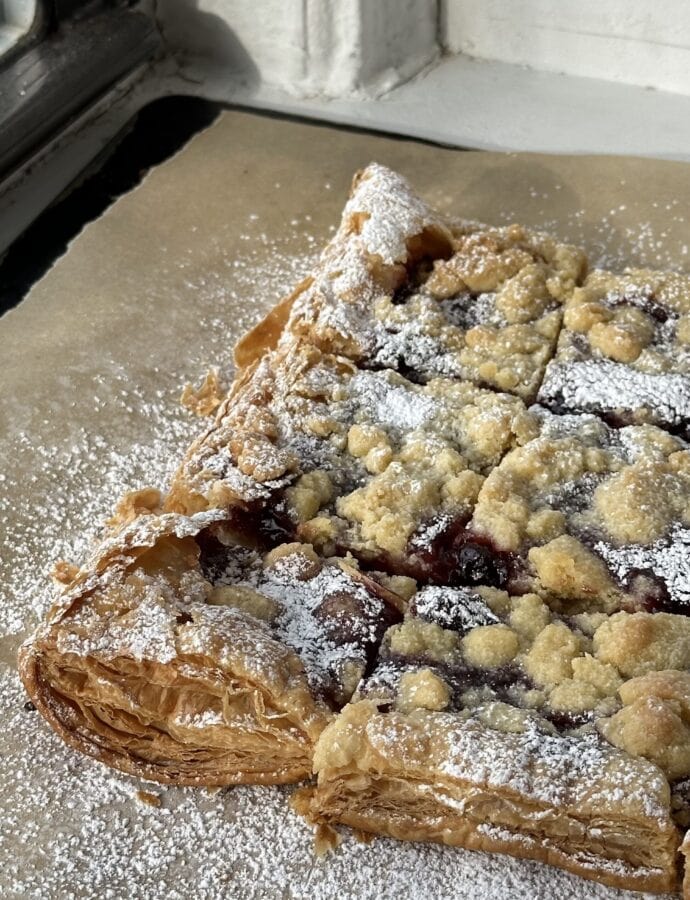
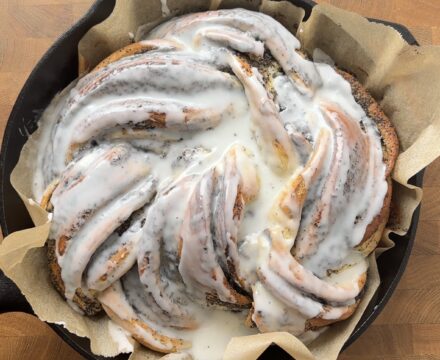
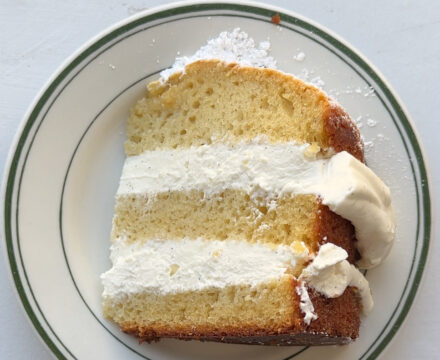
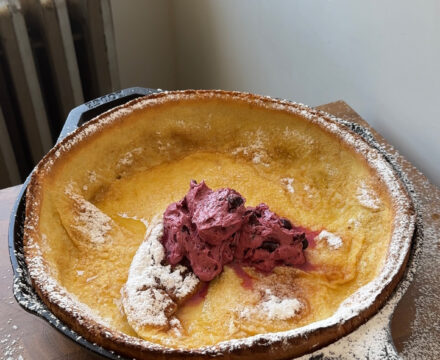

Hi,
Your recipe looks great just wondering if you can make the dough in advance? and how would you store it if so?
Thanks!
Hi! Unfortunately because there is yeast in this dough, it can’t be made in advance because the yeast will start working immediately.